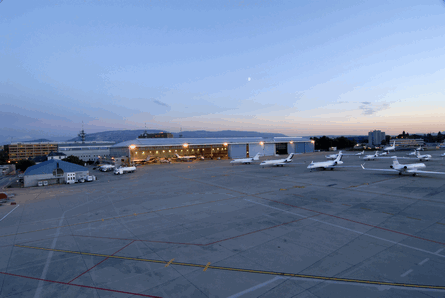Last week's surprise $2.25 billion acquisition of Jet Aviation by US defence giant General Dynamics should further fuel what has been a whirlwind expansion strategy by the business aviation services company since it was sold by its founding Hirschmann family two years ago.
However, original equipment manufacturers who approve Jet Aviation to maintain and install interiors on their business aircraft will have concerns over the Swiss group's relationship with its new sibling Gulfstream, also owned by General Dynamics.
The move could also trigger a consolidation of Jet Aviation's US maintenance business, branded as Midcoast Aviation, and Gulfstream's service network, operated by General Dynamics Aviation Services (GDAS), with a renaming of GDAS as Jet Aviation or Midcoast also a possibility.
 |
|---|
© Jet Aviation |
Since its 2006 purchase by private capital fund Permira, and the appointment of former Bombardier head of business aircraft Peter Edwards as chief executive last year, Jet Aviation has rapidly grown its global footprint, becoming the first international business aviation services provider to launch operations in both China and Russia. It also opened earlier this year a 10,000m² (107,650ft²) widebody completions hangar at its main Basle site in Switzerland.
Edwards told Flight International that Jet Aviation's "main strategic focus" will remain on emerging markets, where the installed fleet is expanding fast. The company already has maintenance bases in Dubai, Saudi Arabia and Singapore. "We have made great strides in Moscow and Beijing, which are going extremely well, despite the fact that they are quite complex markets to enter," he says (in both cities, Jet Aviation is partnered with a local company). "There are clearly other markets that we think are quite important. When you see the backlogs [for new business aircraft], you have to consider Brazil and India."
 |
|---|
© Jet Aviation |
North America is less of a priority, although Edwards says Jet Aviation will continue to look to expand its Midcoast Aviation subsidiary. Later this year it will open its first western US maintenance hangar and fixed-base operation at Ogden, Utah.
Before the General Dynamics acquisition - which is expected to receive regulatory approval by the end of the year - Jet Aviation's Gulfstream business was "probably our largest and second oldest after Learjet", says Edwards, who admits other OEMs "naturally have questions because of the proximity of the two companies". However, he insists Jet Aviation will remain independent of the Savannah-based airframer. "We intend to continue fully supporting the entire OEM community, including Gulfstream," he says. "We will sit down with each of them individually and go through any concerns."
Although Edwards says there is "very little overlap" between Midcoast and the GDAS sites - which service Gulfstreams and other marques - both companies have hangars in Dallas and West Palm Beach, Florida and Jet Aviation also owns the Savannah Air Center near Gulfstream's factory. The manufacturer's only company-owned service centre internationally is at London Luton airport, not far from Jet Aviation at Biggin Hill. Edwards says the two organisations are "very complementary", although "whether it makes sense to look at the service footprint is something that we still need to think through".
General Dynamics chief executive Nick Chabraja says Jet Aviation will "support one of our core growth areas". The company represents Gulfstream's "principal overseas relationship" and "it's one we wanted to put in our own hands", he says. General Dynamics' aerospace division, which comprises Gulfstream and GDAS, had revenues of $4.8 billion in 2007, making up just under one-fifth of its overall turnover.
Chabraja says General Dynamics will be focused on making Jet Aviation more efficient rather than attracting more business. "We want to turn the wick up even faster," he says. Edwards says Jet Aviation is today a much more productive business than in the past.
"As we've come through the evolution from a family business, we've implemented a range of efficiency initiatives," he says. "However, there may well be areas where we can learn a lot from General Dynamics in terms of better utilising our productive space. If we can find ways of moving work through our factories more quickly, that would be a great benefit to us."
Jet Aviation, which was founded in 1967, has almost 5,600 employees. As well as maintenance and being one of a handful of businesses specialising in widebody business jet completions, the company operates a managed charter fleet and sources business aircraft on behalf of customers.
Source: Flight International























